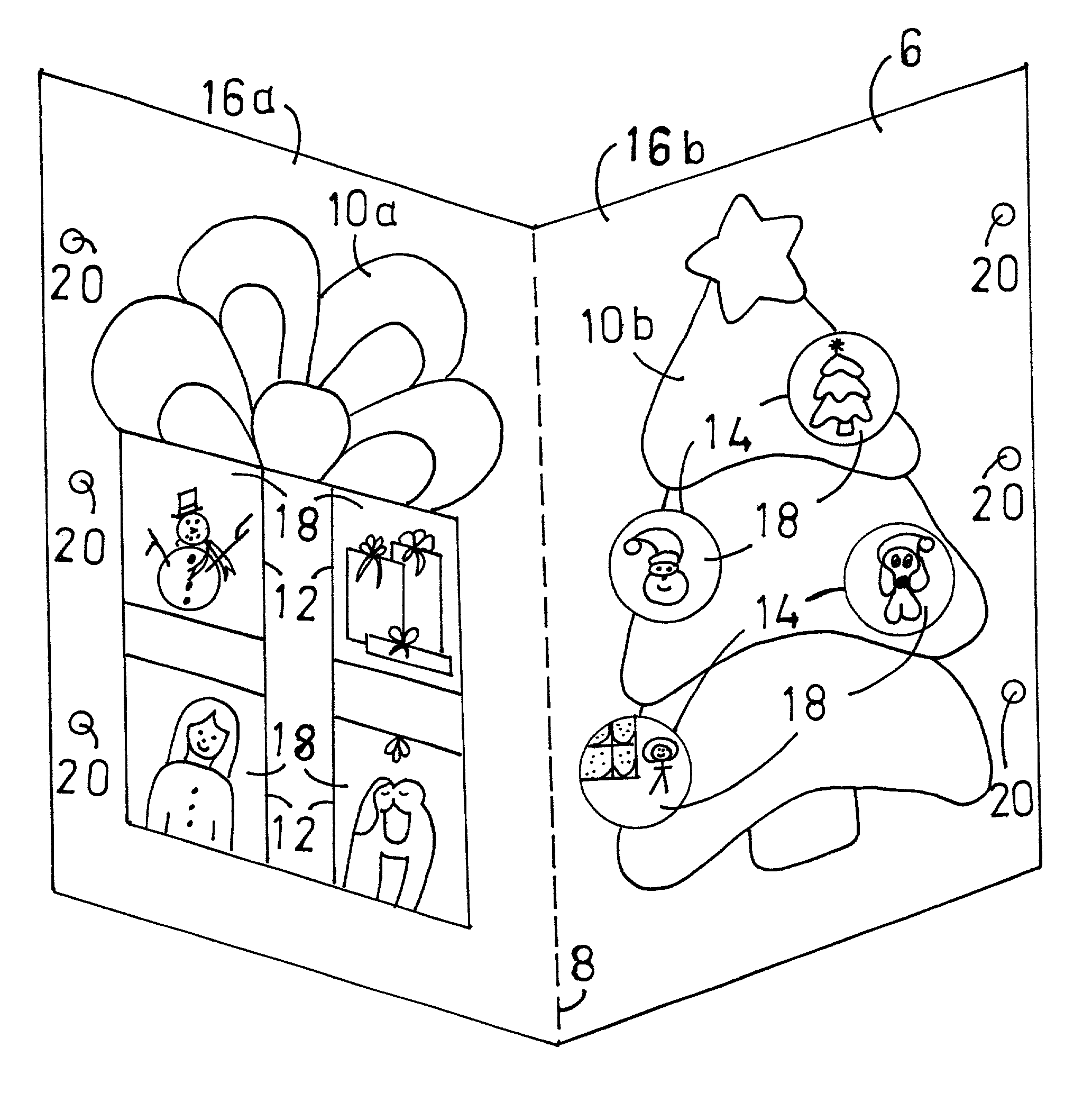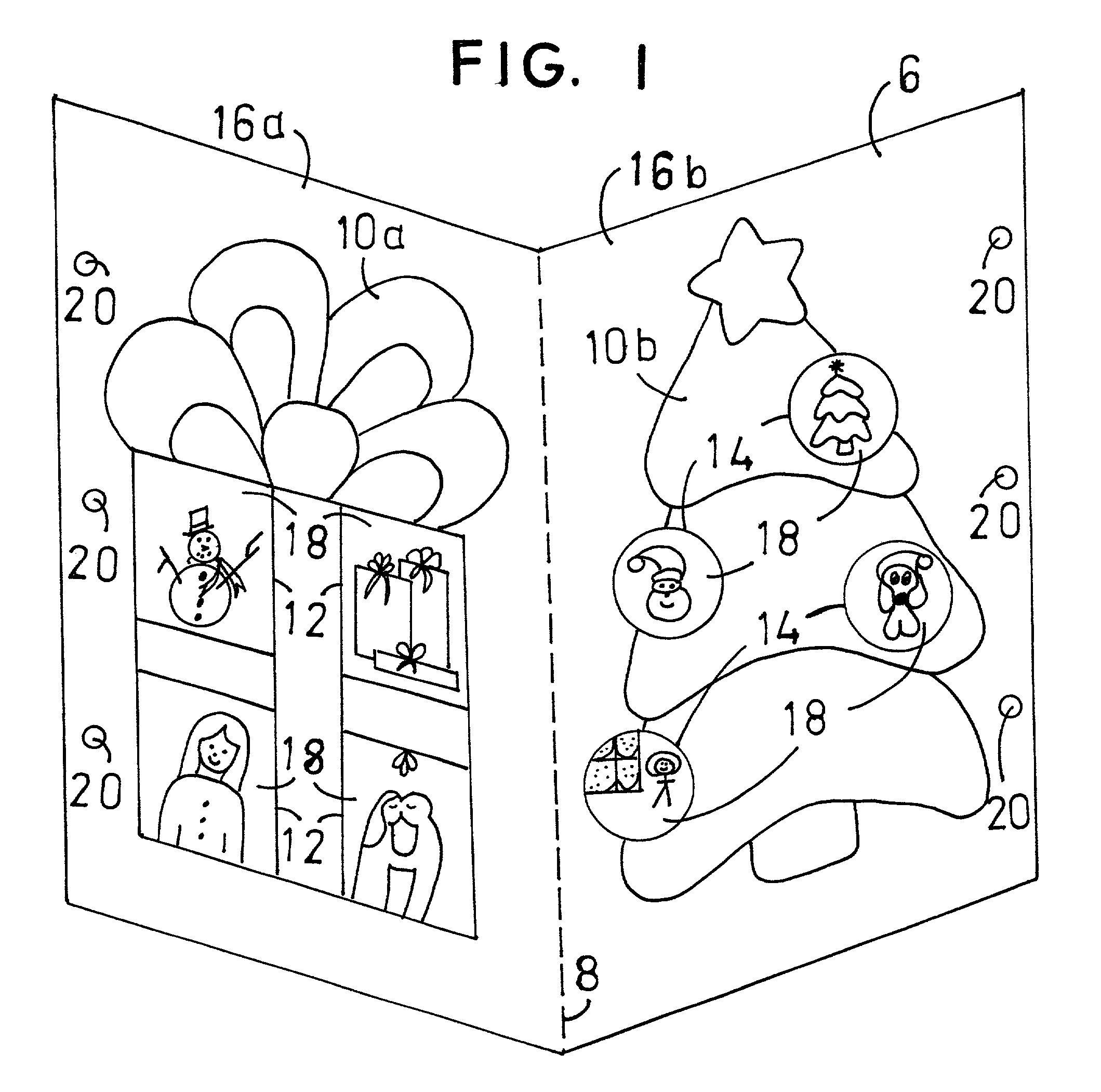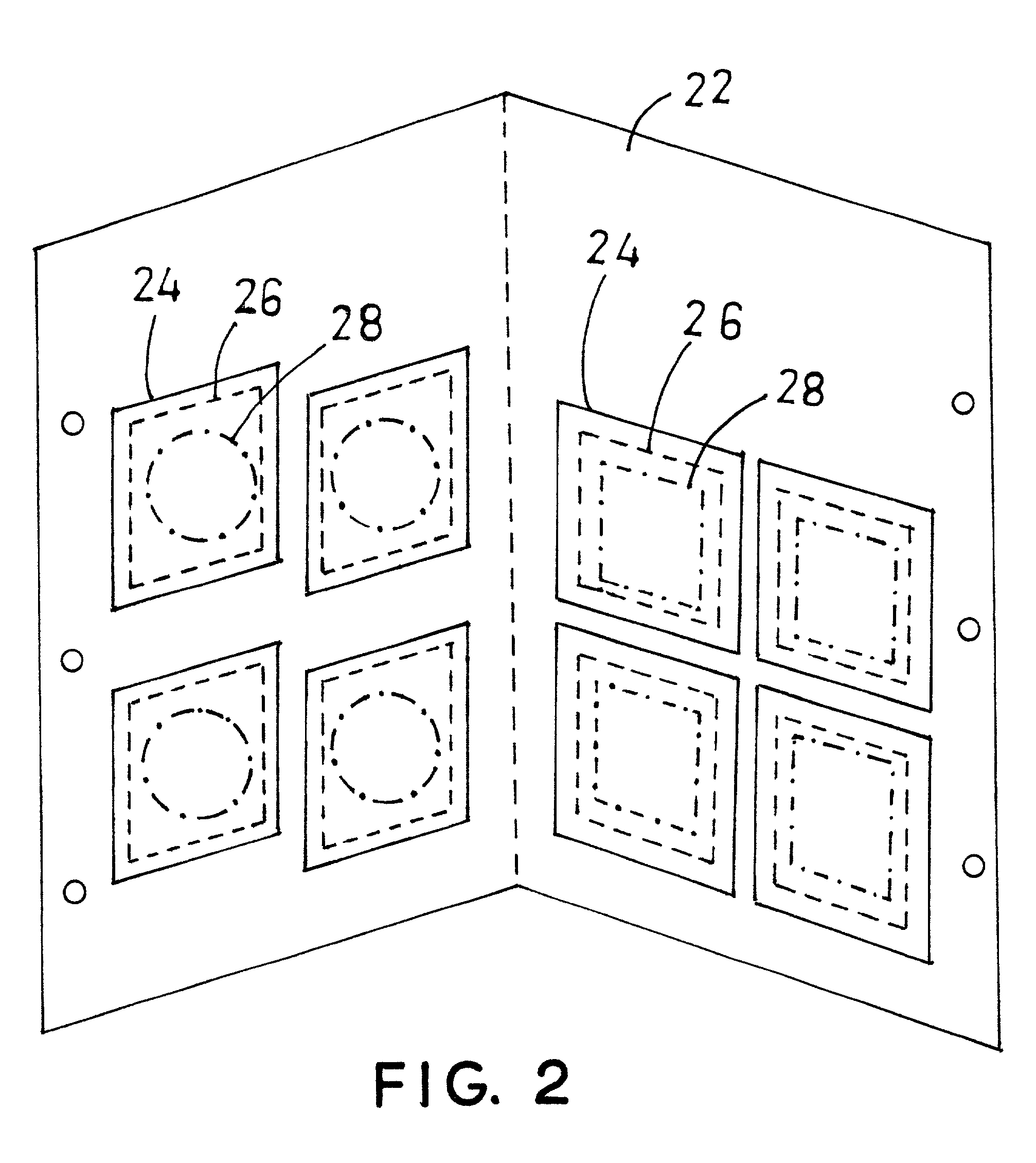Designer photograph album page
- Summary
- Abstract
- Description
- Claims
- Application Information
AI Technical Summary
Problems solved by technology
Method used
Image
Examples
Embodiment Construction
[0036] FIG. 1 shows the unfolded front view of a panel 6 which, when folded 8, becomes the front and back of a single page of the album. The size of the panel and page will vary based on the photo album or general use binder that the page is intended for. Each page, or two halves of the panel 16a & 16b, depict graphics 10a & 10b and contain a plurality of apertures 12 & 14 whose shapes and sizes are related to the graphics. On FIG. 2, the pockets 24 on the inside section of the panel correspond with the apertures in the panel and allow the front of the photograph 18 to be displayed through the apertures 12 & 14. A plurality of holes 20 are placed in the margin along the edges furthest from the fold 8 so the page can easily be folded closed and inserted into a photograph album or general use binder.
[0037] FIG. 2 is the inside view of the panel 22. Pockets 30 are used to hold the photos 26 in alignment with the apertures 28 so that the photos can be seen through the apertures FIG. 1 1...
PUM
 Login to View More
Login to View More Abstract
Description
Claims
Application Information
 Login to View More
Login to View More - R&D
- Intellectual Property
- Life Sciences
- Materials
- Tech Scout
- Unparalleled Data Quality
- Higher Quality Content
- 60% Fewer Hallucinations
Browse by: Latest US Patents, China's latest patents, Technical Efficacy Thesaurus, Application Domain, Technology Topic, Popular Technical Reports.
© 2025 PatSnap. All rights reserved.Legal|Privacy policy|Modern Slavery Act Transparency Statement|Sitemap|About US| Contact US: help@patsnap.com



